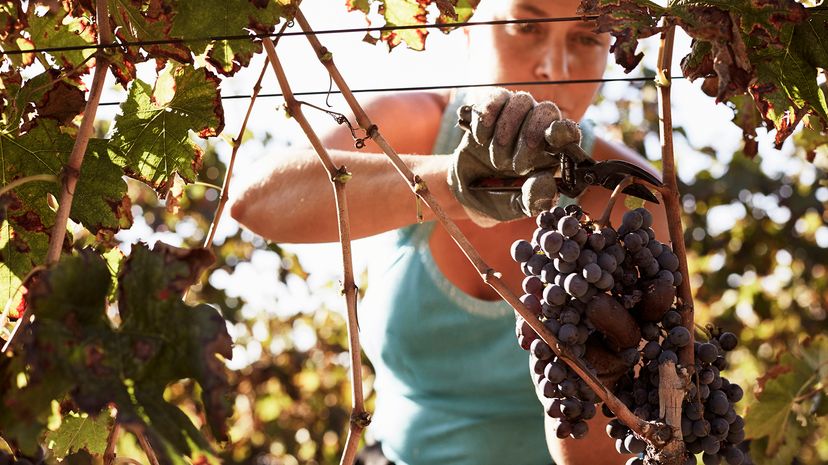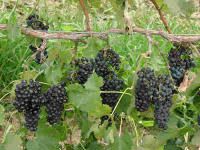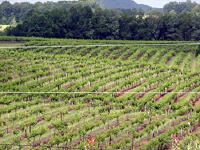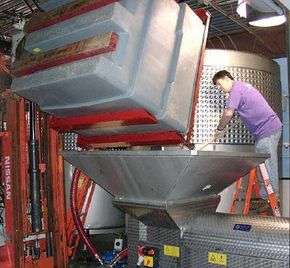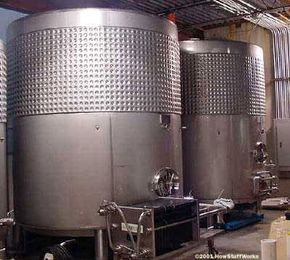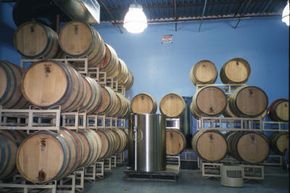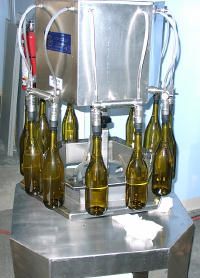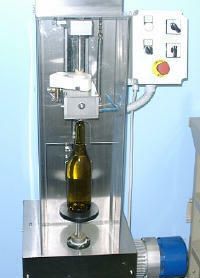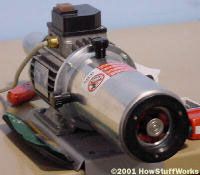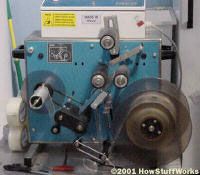The must, whether from red grapes or pressed white grapes, is ultimately sent to the fermentation tanks. The fermentation tanks are airtight, made of stainless steel and can hold 1,500 or 3,000 gallons (5,678 or 11,356 liters).
The tanks are cooled with glycol to maintain a temperature in the 40 F range (4 C range). The winemaker adds sugar and wine yeast to start the process of fermentation. The type of yeast and the amount of sugar added depends on the type of grape and style of winemaking.
Fermentation Begins
When the yeast first hits the must, concentrations of glucose sugar (C6H12O6) are very high, so it is through diffusion that glucose enters the yeast. In fact, it keeps entering the yeast as long as there is glucose in the solution.
As each glucose molecule enters the yeast, it is broken down in a 10-step process called glycolysis. The product of glycolysis is two three-carbon sugars, called pyruvates, and some ATP (adenosine triphosphate).
ATP supplies energy to the yeast and allows it to multiply. The two pyruvates are then converted by the yeast into carbon dioxide gas (CO2) and ethanol (CH3CH2OH), which is the alcohol in wine.
The alcoholic fermentation process, sometimes called primary fermentation, takes anywhere from two weeks to about a month. During this time, the winemaker samples the fermenting must and measures the pH or acid levels and sugar content to determine that the fermentation process is proceeding as it should.
To make a dry wine, the winemaker will allow the yeast to transform all of the sugar into alcohol. When making a sweet wine, winemakers will stop the fermentation process before all of the sugar has turned into alcohol.
